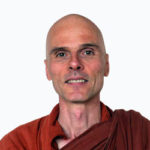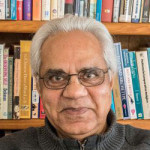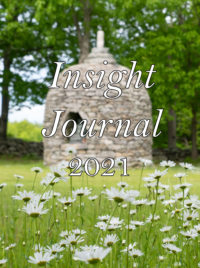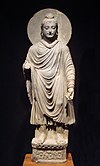Writings of Korean Seon Masters
Total 23. 1 page
No Subject / TopicRead23
The objective of publishing the Great Seon Masters of Korea(planned by the Bureau of Missionary Work of the Jogye Order of in 2006) was to introduce the lives and Dharma talks of the great Seon Masters of Korea to the Western world that is mostly not familiar with them. Twnety-five Seon Masters are introduced, starting with the most venerable priests, such as Wonhyo, Euisang, Doui, Jinul, Bo-u, Hyujeong, and the recent great Seon Master Seongcheol. It would be futile to attempt to introduce Korean Buddhism to the world without introducing the great tradition of these great Masters. 10,038
22
“Wake up! Stop being deceived by your attachments, fears, and dualistic thinking. The truth you are searching for already exists everywhere in your daily life. When you realize this, you’ll laugh until your sides hurt at how much effort you spent to discover that you are yourself!” The wisdom and deep compassion of one of Korea’s foremost Seon(Zen) Masters shines throughout the five Dharma talks that comprise Wake Up and Laugh. With clear insight, Seon Master Daehaeng emphasizes the role of our fundamental mind, our Buddha-nature, across a wide range of topics from family and business problems to death and mental illness. The act of letting go and entrusting, combined with observing and applying what we learn when we allow this letting go to happen, form the cor.. 9,172
21
No River to CrossTrusting the Enlightenment that’s Always Right HereSoen Master Daehaeng, AuthorIt is often said that enlightenment means "crossing over to the other shore," that far-off place where we can at last be free from suffering. Likewise, it is said that Buddhist teachings are the raft that takes us there. In this sparkling collection from one of the most vital teachers of modern Korean Buddhism, Seon Master Daehaeng shows us that there is no raft to find and, truly, no river to cross. She extends her hand to the Western reader, beckoning each of us into the unfailing wisdom accessible right now, the enlightenment that is always, already, right here. A Seon (Zen) master with impeccable credentials, Daehaeng has developed a refreshing approach; No.. 12,387
20
This two-volume set (A prose collection & A collection of poems) is the compiled writings of the great Seon master Gyeongheo (1846~1912). He revive the Seon meditation tradition when it was in turmoil. He established Seon meditation halls at such temples as Cheonjangsa Temple, Sudeoksa Temple, Beomeosa Temple, Hainsa Temple, Songgwangsa Temple, and Hwaeomsa Temple. His disciples (Mangong, Hyewol, Suwol, Hanam, among others) also became great masters, continuing the pure lineage of Seon. This collection includes public teachings, letters, and poems compiled by Mangong Sunim... 12,146
19
Soon after the inception of Buddhism in the sixth or fifth century B.C.E., the Buddha ordered his small band of monks to wander forth for the welfare and weal of the many, a command that initiated one of the greatest missionary movements in world religious history. But this account of a monolithic missionary movement spreading outward from the Buddhist homeland of India across the Asian continent is just one part of the story. The case of East Asian Buddhism suggests another tale, one in which the dominant eastward current of diffusion creates important eddies, or countercurrents, of influence that redound back toward the center. These countercurrents have had significant, even profound, impact on neighboring traditions. In East Asia perhaps the most important countercurrent of i.. 9,656
18
THOUSAND PEAKS is the first comprehensive history in English of the rich tradition of Korean Seon, little known in the West but one of the few living links with the vigorous, ancient schools of Chinese Chan... 17,285
17
Living Peace is the first English translation of Zen Master Kyunghoon Sunim’s extensive body of poetry. It contains 57 of his most loved poems, as well as insightful commentary from Zen monk Hyedang Sunim. The poems are artfully rendered into English by Banyahaeng Chookyung Lee. An elegantly designed, spiritually inviting book, Living Peace introduces the voice of a contemporary Zen master to the English-speaking world. As the title suggests, the book invites us to step away from a life often fragmented by desire and enter instead a life rooted in the principles of Zen Buddhism. Thoughtful and eloquent, Kyunghoon Sunim’s poems remind us that the place of peace is not distant from us, but here, awaiting only our discovery. This book is part of the "Voices from Korea" .. 13,941
16
In this brilliant new translation and commentary on The Diamond Sutra—one of the sublime wisdom teachings of Mahayana Buddhism—Mu Soeng integrates this ancient wisdom teaching with current scientific and psychological thought. His clear and readable commentary traces the connections between these teachings and contemporary theories of quantum reality, explores the sutra within the framework of Buddhist meditation practices, and provides a comprehensive historical survey of the Mahayana Buddhist tradition. Mu Soeng’’s goal throughout is to reveal the inspiration and wisdom of The Diamond Sutra to today’’s reader in an accessible, engaging, and modern manner... 13,950
15
A Buddha from Korea is intended to open a window on Zen Buddhism in old Korea. The book centers on a translation of teachings of the great fourteenth-century Korean Zen adept known as T’aego, who was the leading representative of Zen in his own time and place. This is an account of Zen Buddhism direct from an authentic source. Customer Review from Amazon.com Brilliant translation of a neglected Zen master, January 24, 2004 Reviewer: a reader (Decatur, Georgia USA) - See all my reviews Prior to this translation, not much was known in the English-speakin.. 18,329
14
At large temple sites, there are usually small and large gatehouses from the main entrance to the temple building, with bells, pagodas, temples, images of Buddha and various decorative emblems seen here and there. Their purpose is not just limited to decorating the temple but they aspire to praise the virtuous deeds of Buddha and realize his ideal world filled with goodness and beauty in a sublime way. This book explains the symbolic significance of varied temple ornaments and decorative emblems that were created from religious yearning towards Buddha and aesthetic sense of the past. It explores the religious yearnings found in varied emblems and ornaments which come in the form of lotus flower, dragon, turtle, lion, fish and so on and takes a fresh look at their beauty. Thes.. 12,866
13
A translation of the Chinese text, the Brahmajala Sutra. This a fundamental text for Chinese, Korean and Japanese Buddhists in the East and West and demonstrates an ancient ground for socially engaged Buddhism... 8,748
12
Meditation is more than staring at your navel. It is a way of transforming life from the inside out. Former Buddhist nun Martine Batchelor knows this from a decade spent in a Zen monastery. Combining theory and practice, Batchelor transforms her own meditation experience into a manual that echoes the simple elegance of Zen. Ten chapters focus on different aspects of meditation, and each is broken down into background, practice, and a final guided meditation. For example, the chapter on daily life first explains the difference between formal and informal meditation, then discusses the many opportunities for informal meditation and how we can learn from those experiences. In the "Practice" section of the chapter, Batchelor offers specific methods for informal meditation, .. 14,044
11
With so many books available in today’s spiritual supermarket offering advice and guidance, it’s hard to know what is genuine and what is not. Mind Only combines beautiful photographic images of historic Korean Temples with selected teachings, aphorisms and poems of renowned Zen masters to present an authentic portrait of the Korean Zen tradition. Zen was first introduced to the Korean peninsula directly from T’ang China during the 7th Century which means that Zen in Korea considerably pre-dates its better known Japanese counterpart. During its 1400-year history, the down-to-earth but hitherto largely unrecognized Korean Zen tradition has produced a plethora of eminent Zen masters. The provocative and insightful sayings of these great teachers are a delightful counterpoint to the.. 15,221
10
Empty House explores the origins of Korean Zen and traces its history as a living tradition up to the present day. Whilst Chinese Zen was effectively wiped out by the Cultural Revolution, the Korean tradition maintains the original vigorous teaching style of the Lin Chi school... 16,840
9
Dharma messages by Ven. SongChol, Korean Jogye Zen Master and Patriarch Translated by Brian Barry Korean Buddhist thought maintains the belief that meditation is an effective means to reaching enlightenment. Monk Song Chol is one of the meditation promoters with his famous question of "Who Am I"? If you keep on asking that question over and over, according to him, you will be able to attain "the eye that sees everything clearly" and reach the level to realize that "Mountains are mountains and water is water," another famous phrase coined by the great master. Song Chol is also famous for his practice of asceticism. The objects he left when he died in 1993 at age 82 were only a ragged robe, a pair of glasses and some books. While living as a monk f.. 18,819
1 2 End










